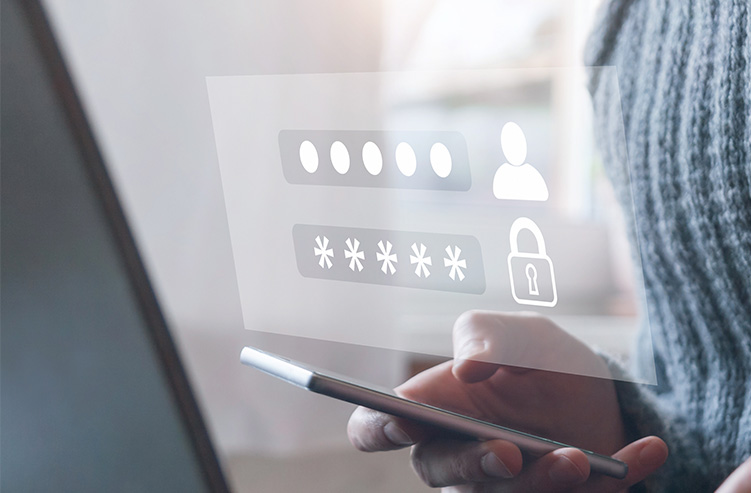Tips to Protect Your Money and Identity
Awareness is the key to effective protection against identity (ID) theft. CrossFirst Bank wants to help build your awareness of steps you can take to protect yourself from ID theft. Identity theft occurs when someone commits fraud by using your personal identifiable information, such as your name, social security number, or credit card number, without your permission. Here are some things you can do to protect your information.

Identity Theft Protection Tips
- Be judicious with whom you share your personal information and Social Security number, and never share your confidential information with anyone through email.
- Report lost or stolen cards immediately.
- Shred all materials with important information such as your full name, date of birth, account numbers, etc.
- Use anti-virus software on your computer.
- Don’t open emails or attachments from people you do not recognize.
- Protect your password(s).
- Use passphrases in place of passwords. Passphrases are more difficult to guess.
- Review and reconcile your banking transactions on a regular basis.
- Do not open emails or answer phone requests for information from people you do not know.
- Where possible, enable multi-factor authentication (MFA) if not enabled by default.
- Verify the use of a secure session in your browser for online banking and vendor payments (the URL address should have an “s” at the end of the HTTP address to indicate a secure session).
- Do not leave your computer unattended and close your computer sessions when not in use.
- Check your credit report at least annually to dispute any possible discrepancies. You can obtain a free yearly credit report here: Annual Credit Report
For more information on identity theft protection, please visit Federal Trade Commission by clicking here.
Tips to Protect Your Business
As a business owner or employee of a business, you need to take proactive steps to avoid, or at least minimize, most threats.
- Create strong passwords.
- Prohibit the use of “shared” passwords.
- Never share usernames or passwords with third-party vendors.
- Limit administrative rights on users’ workstations.
- Follow your company’s security policies and procedures.
- Ensure your company uses anti-virus software.
- Don’t open emails or attachments from people you do not recognize and do not answer phone requests for information from people you do not know.
- Protect your password(s).
- Use passphrases in place of passwords. Passphrases are more difficult to guess.
- Where possible, enable multi-factor authentication (MFA) if not enabled by default.
- Verify the use of a secure session in your browser for online banking and vendor payments (the URL address should have an “s” at the end of the HTTP address to indicate a secure session).
- Do not leave your computer unattended and close your computer sessions when not in use.

Scams to Be Aware Of
Text or Phone Scam
How it works:
- Fraudsters call or send a text message using a spoofed phone number for CrossFirst Bank. They warn you of suspicious debit card transactions on your account.
- The fraudster will claim they need to verify your identity or cancel the transactions by asking for your digital banking user ID and/or Secure Access Code (SAC) (the one-time passcode sent to your phone to verify your account).
- The fraudster uses the SAC to initiate the "forgot password" feature. Upon logging in, they change the password and transfer money from your account to others.
How to Avoid Being Scammed
CrossFirst Bank will NEVER contact you through email, phone, or text and request confidential information such as your account number, Social Security number, debit/credit card, User ID, Password, PIN, or Secure Access Code. If you receive a communication appearing to be from CrossFirst Bank, please contact us. This common technique, where fraud takes place through digital channels, phone, pop-up windows, and invalid websites, is called “phishing.” If we need to update information about you, we will contact you through more secure methods.
If you feel you have been targeted or you have provided confidential information to someone in error, please contact CrossFirst Bank immediately at (844) 261-2548 to report the incident.

